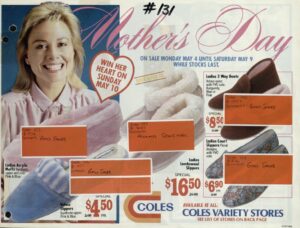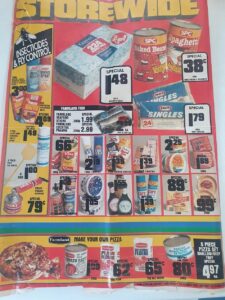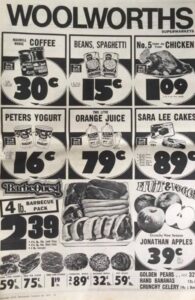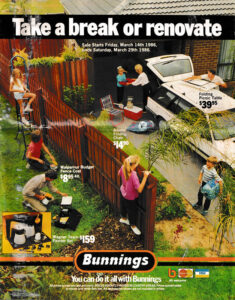A History of Traditional Supermarket Catalogues
In Australia, weekly catalogues have become an essential part of everyday shopping, shaping how families plan meals, stock their homes, and hunt for savings. Major supermarket chains like Coles, Woolworths, and IGA have long used catalogues not just as advertising tools, but as vital connections to their communities. These colourful flyers, packed with specials and promotions, have helped define Australia’s retail culture for decades. But when and why did these catalogues first appear? To understand their history, we need to look at how Australia’s supermarkets evolved—and how competition, technology, and consumer habits turned the humble printed catalogue into a shopping tradition.
Coles introduced printed catalogues in the mid-20th century to advertise weekly specials and promotions. These catalogues became a staple in Australian households, aiding customers in meal planning and budgeting.
While specific examples of Coles’ earliest catalogues from the 1950s and 1960s are not readily available online, there are resources that provide insights into the history of Coles’ advertising materials. For instance, the State Library Victoria has digitised over 6,000 items related to Coles and its associated companies, including promotional booklets and catalogues. These archives offer a glimpse into the evolution of Coles’ marketing strategies over the decades. One of the oldest catalogues Coles published is available online. This month Mothers’ Day sales are the main content in the catalogues. It was a coincident to find a Coles Mothers’ Day catalogue in their archive. This triggers a lot of sentiments of nostalgia.
Another great example of an old Coles Catalogue can be found on this reddit post. Check out the first page of the catalogue of Coles New World below. Funny comments are waiting you there. You can surprise yourself by the difference in product sizes and prices.
It feels like nothing much has changed aside from the availability of the digital catalogues and handy features like filling your shopping cart easily on their website.
We can also find some old Woolworths catalogues but they are mostly not available online. Look at the example I gave you in this article, there is so much difference in design.
Also, the inflation is crazy right? Look how much difference there is in prices. You could buy Maxwell House coffee for only $.30 back then! Whole chicken is only $1.09.
For those interested in exploring more about Woolworths’ advertising history, visiting the National Library of Australia’s digital collections or engaging with online communities dedicated to Australian retail history can provide valuable insights and visual examples. Check out this link for national library archive: Woolworths Holdings Limited Collection at National Library of Australia.
Grocery stores are not the only ones with old cataogues in this post. Let’s check out what Kmart and Big W had back in the day. We can spot catalogues of these stores from 1980s! It is really cool to see how much the world and design have changed in 30 years. These catalogues are from late 80s:
The first one above belongs to the early winter sale in 1986. Ryan Smith posted that on Flicker which is one of my favourite photography websites. Check out the original poster’s page. The same photographer also posted one nostalgic Bunnings Catalogue with a really cool cover. I liked it a lot. Here is a preview of that cover:
Another example of nostalgia with beautiful models with funny hair comes from the 80s’ Kmart. startsat60.com posted a 40-year old Kmart catalogue in 2019. It may feel anxious to compare the old prices of these stores to today’s. But here is the cover page of a 1986 Kmart Catalogue. I linked the post, too.
Looking back at these early catalogues from Coles, Woolworths, IGA, Kmart, and Big W feels like stepping into a different Australia—one where a trolley full of groceries or a brand-new TV cost just a fraction of today’s prices. It’s hard not to smile at the hand-drawn ads and the simple, straightforward specials that families relied on every week. But as charming as these old catalogues are, they also remind us how much times have changed. Compared to today’s prices, the deals from the past seem almost unbelievable, highlighting just how dramatically inflation has reshaped the cost of living. While the catalogues may have gotten glossier and the products fancier, that feeling of chasing a good bargain is as strong today as it was generations ago.






